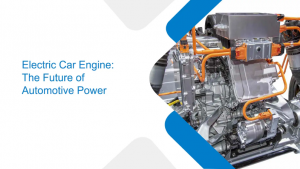Progressive Die Stamping: In Past and Current Transformations
- Progressive Tooling |
- Mar 9, 2024

It can be intimidating to fabricate complicated and detailed pieces. Producers and metallurgists typically have to sort through a long list of fabrication possibilities to ensure they select the best, most functional alternative.
Progressive die stamping is one of the several choices, and it is a quick and generally effective method. Below mentioned are the past and current transformations in progressive die stamping:
What is progressive die stamping?
A metalworking technique called progressive die stamping is used to effectively make several pieces. A modification of the conventional metal and die stamping technique, the progressive die design is particularly well-suited for the large-scale manufacturing of intricately shaped components.
With a stamping die, metal sheets can be cut and formed using the long-run progressive stamping process. Several stand-alone workstations that carry out a single task or set of related tasks make up the process.
In addition to many other tasks, progressive tooling systems should be capable of coining, cutting, bending, punching, shaving, and much more.
Progressive scrap metal is the result of concurrently and progressively feeding raw materials into an automated feeding system. Every phase is a backdrop for the one before, continuing until the substance takes the desired shape.
When the procedure is finished, you can cut the component off the stock strip to obtain the finished item. Progressive die stamping dramatically reduces lead times and production costs by producing metal components in various sizes and shapes.
Progressive die stamping in the past:
Before metal was discovered, people made basic hand tools from wood, rock, and bone. This was found before the fire.
Machinists and electric motor manufacturers utilized the progressive stamping method to produce large quantities of components to meet the constantly increasing demand. These early activities were mostly carried out internally.
The process of mining, smelting, and shaping metal into useful products eventually developed. Metalworking is the term most people use to describe this activity. The people who worked with metal were highly esteemed in ancient communities.
An increasing number of workers with metalworking skills were required as more and more metal products and instruments were constructed. Metal objects were essential for agriculture, industry, jewelry manufacturing, and defense.
Progressive die stamping in modern days:
Sheet metal’s versatility keeps growing as it may be utilized to make pieces of all sizes and styles for various industries. Modern progressive metal stamping machines find application in a vast array of industries.
In modern days, you can find several progressive die manufacturers who offer the service at a minimal cost. With modern technologies, you can get a one-stop solution for all your metal processing needs.
Materials used in progressive die stamping:
A wide range of materials can be utilized with progressive stamping and fabrication, depending on the particular requirements of the parts you are attempting to manufacture. Of course, figuring out which is ideal for you will depend on many criteria, including the part’s purpose, longevity, and resistance to corrosion.
However, a few of the components that are most frequently utilized in this procedure are as follows:
- Steel alloys: There are several varieties of progressive steel alloys available. Cold-rolled steel is one type of steel that is widely available and is renowned for its strength. Stainless steel is also useful because it resists corrosion, which makes parts that can tolerate hostile environments easier to fabricate.
Next is low-alloy, high-strength steel. This material, also well-known for its endurance, is particularly useful when ensuring maximum structural integrity.
- Copper alloys: Copper, used to make many electrical components, is well-known for its remarkable electrical conductivity. Then there are its most often used alloys, brass and bronze, with excellent aesthetic qualities and practicality.
- Exotic alloys: Access to unusual alloys may also be essential for progressive die stamping success. Titanium has a high strength-to-weight ratio, making it ideal for various applications, including aerospace and medicine. Inconel also offers great temperature and corrosion resistance.
Advantages of progressive die stamping:
- Faster production speed: The progressive die-stamping technique produces more components faster since it is fed with parts continually. This is especially advantageous for companies that want to generate large quantities of goods.
- Broader design freedom: More creative freedom is available with progressive die stamping. The procedure can handle various geometries, from basic to intricate. Once you choose the best progressive die manufacturers, you can have the best design.
- Cost-effective: Progressive die stamping reduces overall production costs because it produces less waste, sets up more quickly, has higher repeatability, and produces goods more quickly. Using an automated method, component manufacturing requires fewer workers, lowering labor costs and the danger of workplace accidents.
Partial words:
Eigen’s areas of expertise include prototyping tools, high-speed stamping progressive tools, and electroplating. We provide a broad range of contract assembly services, including fully automated, semi-automated, and manual assembly methods, to give our partners and clients an integrated solution. We also have extensive experience in mass manufacturing and high speed metal stamping.
Ujjwal handles crucial roles like AGM Marketing, researcher, and is an author for KDDL – Eigen. He currently works with Eigen for implementing proven techniques and strategies for marketing plans on online and offline platforms. An expert in efficiently executing SEO, SEM, email marketing, social media marketing, PR marketing, Print campaigns, etc. Ujjwal has coordinated an efficient marketing team on various creative campaigns and programmatic buying to support various digital cross-promotion efforts. Implement efficient search optimization strategies with the help of collateral material and metrics.
In his former years, Ujjwal has years of experience in a managerial role for several reputed companies. His years of experience combined with the flair of writing help him come up with result oriented strategies for Eigen.




